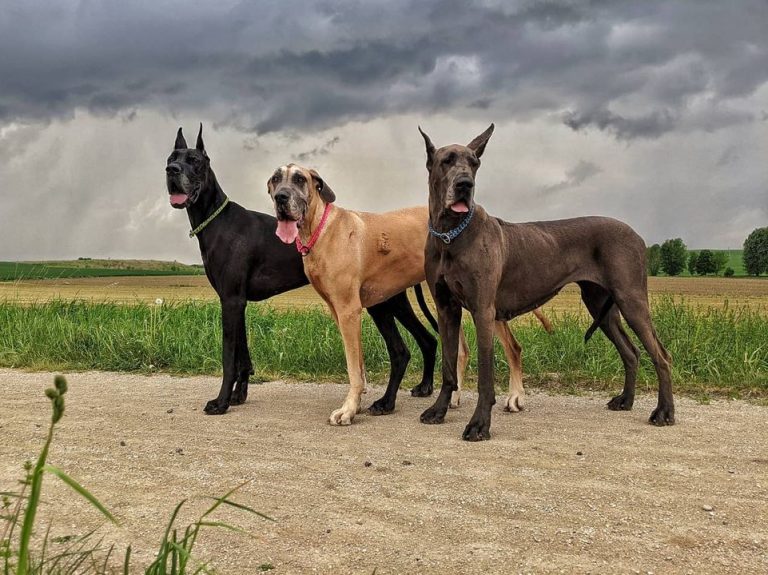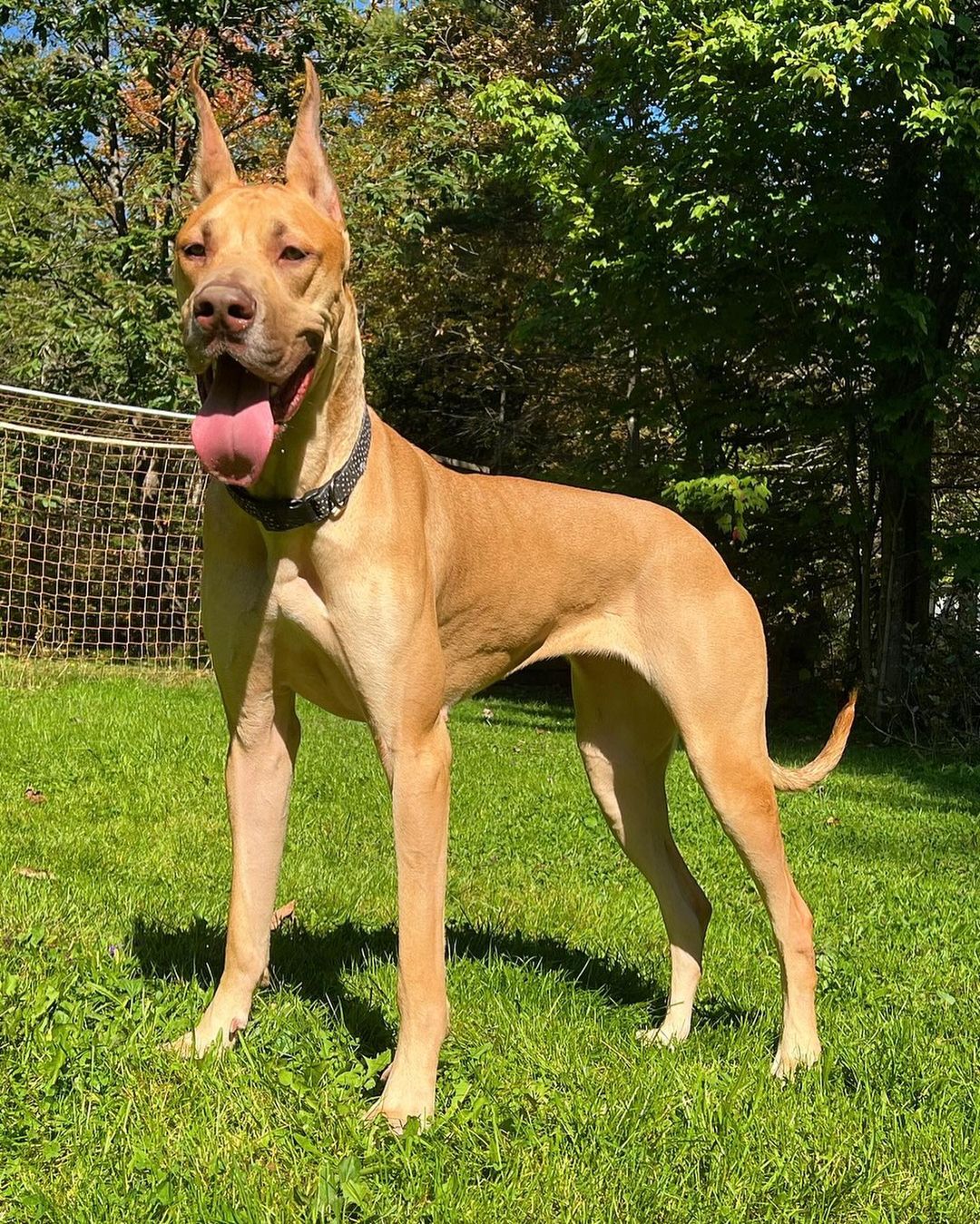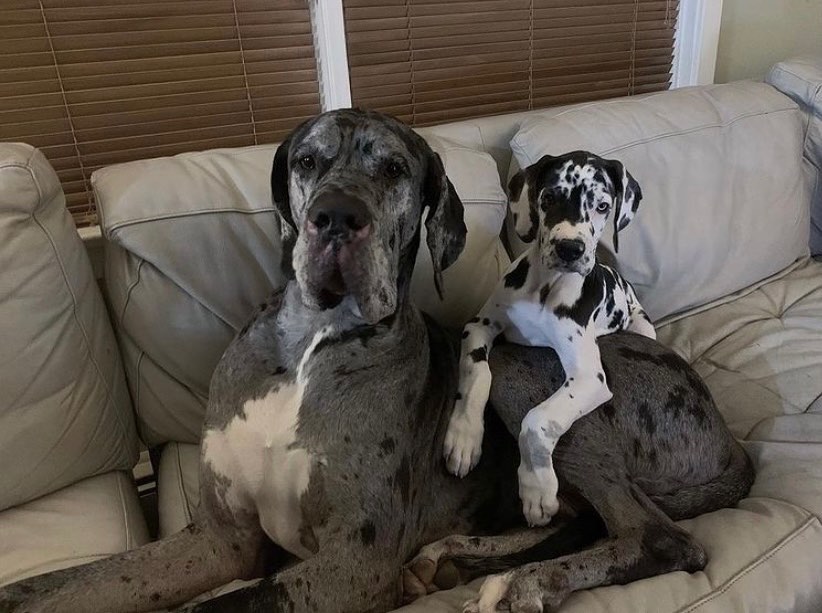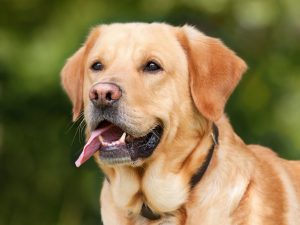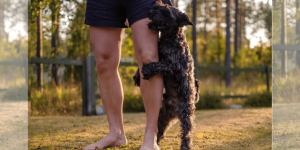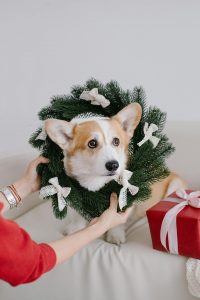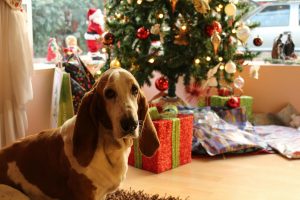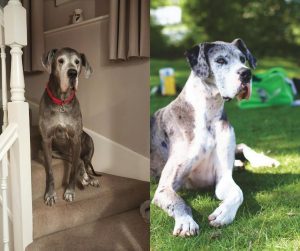The Great Dane is known as the gentle giant. This beloved dog breed is amazing for families. His majestic appearance is a great addition to any household. Famous as one of the largest dog breeds, that extra size means more space, more food, and more fur. The question today is do Great Danes shed?
Potential owners should be aware of potential Great Danes shedding cycles and patterns. Hopefully, we can answer your questions.
Great Dane Coat Structure
First, we have to talk about the Great Danes coat. Your Great Dane puppy has a single coat, which means there is not much fur to shed. Unlike dogs with a double coat, Great Danes do not have an undercoat.
Yes, they have a massive size, but they still do not shed as much as other larger dogs.
Yet, you have to remember, that they have a lot more surface area covered in dog fur. Meaning more loose hair around your home.
Shedding Phases
When we talk about Great Dane shedding, we have to understand phases and cycles. Let’s talk about the full hair cycle.
The first phase is the growing phase, also known as the anagen phase, when new hair is growing. During the second phase, the transition phase, hair stops growing and hair follicles shrink. They also detach from dermal papillae. The third phase is the resting phase when hair is neither growing nor shedding. During this point, a new hair starts the growing phase.
Finally, we have the new hair phase, also known as exogen, when the hair sheds and new hair takes its place. Timing between phases can vary. For example, Poodles, remain in the first phase for longer periods. That is why many people think Poodles are low-shedding dogs, or hypoallergenic dogs when they are actually not.
The thickness of the coat depends on the season. During more daylight hours and warmer temperatures, dogs have a thinner coat. But as spring comes, and the temperature begins to rise, there is more shedding.
How Much Do They Shed?
Now that we answered the question do Great Danes shed, let’s focus on the amount and frequency. According to the American Kennel Club, a Great Dane puppy is a moderate to heavy shedder. If you adopt one, be ready for a fair amount of dog hair around your home.
The good news is that the Great Dane is a single-coat dog. You do not have to worry a lot about seasonal shedding.
Seasonal Patterns
Great Danes shedding happens regularly, but there are certain times of the year when it is worse. For example, weather patterns and natural cycles of the season can trigger the coat to perform its biological function.
Seasonal changes do not happen a lot when your Dane is a puppy. But as they grow into an adult body, they will experience seasonal changes. This usually happens when your dog is two years old.
Keep track of when these seasonal changes happen, so you can be prepared for the heavy shedding season.
Excessive Shedding
While shedding is a normal process, what should you do if you notice excessive shedding in your Great Dane dog? Well, if this doesn’t happen during a seasonal change, you should consult with a veterinarian.
The number one reason for excessive shedding is a poor diet. But there are also other factors, like fleas, ticks, fungal infections, bacterial infections, or anything similar.
Talk to a vet to determine the exact cause of the problem. And make sure to provide regular flea treatment to improve coat health.
How To Reduce Great Dane Shedding
Unless you adopt a hairless breed, you will have to deal with dog hair in the household. But the question is, do you want to brush your dog, or vacuum around the house?
There are ways to reduce the shedding of your pet. No matter the dog breed, every dog needs regular maintenance and regular grooming.
For your Great Dane pet, brushing should happen once every week or twice every week. I think you can do it once per week, but if you like to minimize shedding, do it twice per week. When the shedding season hits, increase the frequency of shedding. This will help you minimize dead hair and loose hair.
For a Great Dane, the best brushes are slicker brushes and bristle brushes. A bristle brush is great for the topcoat, as it doesn’t reach deep. These also provide a massage-like feeling. But first, use a slicker brush to get rid of dirt, debris, and trapped hairs.
Next, we have to talk about your Great Dane diet. The kibble you feed to your dog matters. Consider adding human foods that are rich in omega-3 fatty acids, protein, and minerals. But other than that, feeding high-quality protein and healthy fats food is the way to go. Stay away from foods that are high in carbs, and have meat leftovers as main ingredients.
Are Great Danes Hypoallergenic?
Technically, no dog is 100% hypoallergenic, even the Poodle. Yes, a mix between a Great Dane and a Poodle, also known as Great Danoodle can be hypoallergenic. In the past several years, many breeders have tried to mix the Great Dane with other dogs. They do it either to increase his lifespan, or behavior.
If your family is allergic to dander, you might want to consider a different pet. A Great Dane might trigger allergies and reactions to some extent.
Do Great Danes Shed A Lot?
In most cases, Great Danes are not heavy shedders. They are moderate shedders for sure. But they are nowhere near the level of a Siberian Husky, Golden Retriever, Labrador Retriever, or similar large dogs.
The reason for this is Great Danes have a single coat. Dogs with a single coat do not have an undercoat they change during the season. But since the Great Dane is the largest dog in the canine world, alongside the English Mastiff, there is more space with fur.

